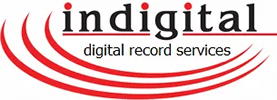Do you want to make your office accessible from any location? Moving to a paperless system is the way to do that. But you will be left with the decision about what to do with all the files, records, and documents that your business already has. You have many choices, and here’s what you need to know about them.
Must You Digitize Everything?
The good news for any company that wants to go digital is that you’re not obligated to try to find a digital solution for everything in the office. While it may be best to transform all your records into one big project, this isn’t feasible for everyone.
If you don’t have the time or budget to scan all your old papers, you might focus on the records you use most often. Or you may designate a cutoff point rather than digitize files that will soon be purged. Some companies only scan the most important documents or only those of their largest customers. The choice is up to you as a business, so don’t feel that this is an all or nothing project.
How Do You Digitize Existing Files?
Most companies do need to include the digitization of at least some of their older records. This process is usually accomplished by physically scanning existing papers and creating a digital file for them. Depending on how many old records you have, this could take significant amounts of time and may even call for the hiring of additional staff to get the work done.
The newly-created digital records are then stored in a specially-designed information system that employees use to retrieve the files. Various organizing methods — often called electronic document management systems — are available, so you can choose one that fits how you access these records (such as by name, date, or even category).
Do You Need a Retention System?
A retention system is an important — and often mandatory — system of storing and purging files based on a set schedule. Most accounting and legal records, like payroll or contracts, have prescribed lengths for which you must maintain each file. It could be a few months or up to a decade or more, depending on the document.
Digitizing records is often the same as storing hard copies. If you destroy physical copies of old company records but leave them in the computer system, your business is open to the same risks if the information gets out. Therefore, you’ll need to decide in advance on a retention schedule and a method of executing it within the new digital system.
Can You Link Old and New Files?
If you will scan and store those old records, be sure they will be accessible for use by current employees in current situations. The most efficient way is to link both old and new records in one file.
For example, if you will use a new cloud-based customer record file, can you attached scanned copies of older records for the relevant customer? Or is it possible to link the new record system with the digitized record storage program? The easier you make it to switch between current documents and past ones, the more your staff will make use of all these tools you create.
Where Should You Start?
Without a doubt, the decision about what to do with your old records can be daunting. With the proper professional assistance, though, you can overcome it. Indigital can help. Our data management experts will assist you in finding the right balance between old and new formats, make a plan for digitizing what you need and find the right system for the most efficient use of your data. Call today to make an appointment.

